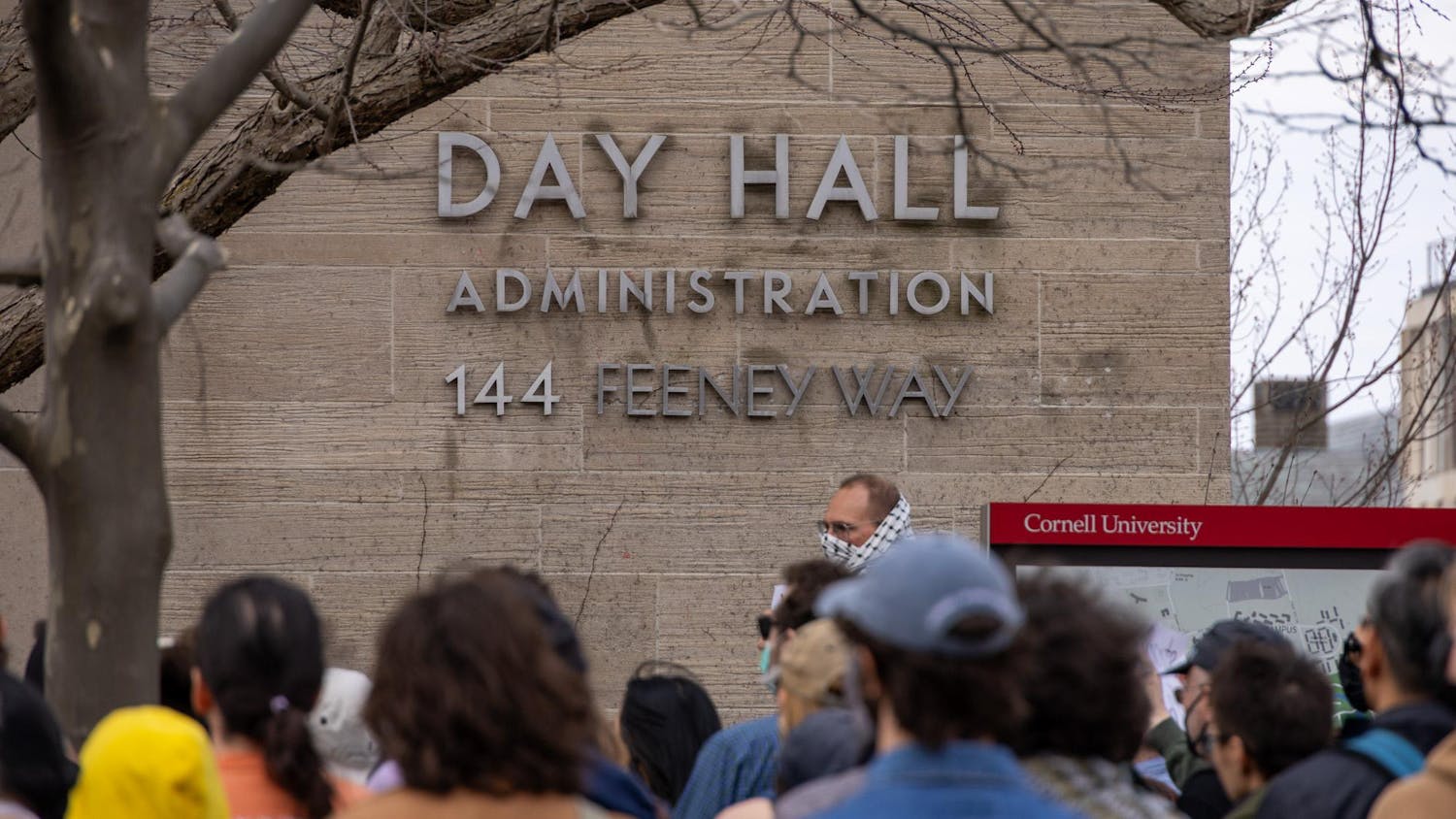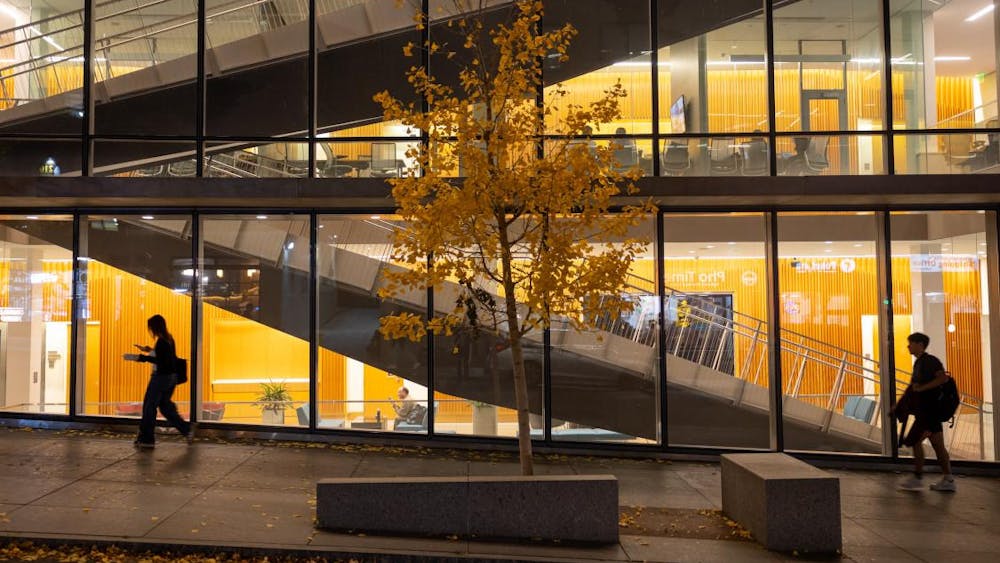Correction appended.
For four years in a row, Cornell’s undergraduate acceptance rate has sloped downward while the number of applicants annually grows by the thousands.
Most tellingly, in 2012, 16.2 percent of applicants were selected for the Class of 2016. This May, for the Class of 2022, that number was 10.3 percent.
As students scramble for a spot in the Class of 2023, The Sun sat down with two admissions officers in charge of the process — Jason C. Locke, interim vice provost for enrollment, and Pamela Tan ’97, director of admissions of the College of Agriculture and Life Sciences — to delve into how Cornell evaluates and selects its students.
What Cornell Seeks in a Student

Unlike many other colleges, which review all applications from a central undergraduate admissions office, Cornell has a “somewhat unique system,” according to Locke. Once an application is submitted, it will be given to the one — and only — college or school that the student is applying to, where his or her material will undergo what Locke called a “first review.”
About 80 percent, or over 40,000 of the applicants, will be chosen to proceed to the next step. Only after the applicant has successfully passed the academic review, the admissions staff will consider other components of his or her application — such as recommendation letters and extracurricular activities, Tan said.
In the first review, the admissions staff of each college acts as gatekeepers by looking at the applicants’ academic performances to determine whether the student will do well at Cornell. This assessment relies on all scores and grades submitted by the students, but will place the heaviest weight on their high school records.
Those who make it to the next step are not the ones “that have E’s and F’s on their transcript,” Tan said. “Even if you are an outstanding student who’s a great fit for Cornell and have wonderful extracurricular activities ... there’s not much I can say about you.”
However, grades are not the only thing that the admissions officers value on transcripts. In addition to the level of performance, Locke said Cornell also looks at how demanding those courses are. In colleges like CALS, where students must pick a major or at least specify a general subject in their applications, admission officers will also take into consideration whether the students have taken and performed well in classes relevant to their intended major.
“If you’re applying to biological engineering, then you need to have very robust … coursework in math and science,” Tan said. “Otherwise, you won’t be able to handle the work here.”
When evaluating transcripts, Cornell doesn’t compare students from different schools, as high schools across the country differ in the depth and width of course offerings. The selection criteria is based on whether the applicant is taking “the most challenging courses within their school” and their performance compared to other students from the same school, and not on the number of AP courses they have taken.
Another important and yet often overlooked factor is the college-specific essay, more commonly known as the “why” essay, which is reviewed in both the first and the subsequent steps of admissions. The essay is the opportunity for students to demonstrate both their writing skills and that they have taken the time to research and learn about Cornell — that the individual “really understands what his or her opportunities are here,” according to Tan.
Once a student passes the first review, their material is taken to the next step, in which Cornell’s admissions staff will start looking at whether the student will be a good fit for Cornell and their intended programs — not just whether they are prepared for the rigorous curriculum, but also if they have certain traits and qualities that will allow them to make the most of Cornell.
Five of the seven undergraduate colleges also invite faculty members to be part of the process, who will either work as part of an advisory committee or be the expert voice on evaluating students’ portfolios, which is required for certain majors and schools. CALS, the College of Engineering and the Charles H. Dyson School of Applied Economics and Management — which is under the SC Johnson College of Business — are the schools that do not involve faculty reviews in their admission processes.
Locke and Tan said they are looking for students who can make the most out of the “any person … any study” environment, who can learn from and collaborate with students from all kinds of backgrounds and majors. Sometimes, this quality — or the “missing piece” in the students’ and parents’ understanding of admissions — even outweighs academic performances in the evaluation process.
“One of the things that drives us crazy is when we hear from students who [have] been admitted to another Ivy say, ‘I just don’t get it, if I’m good enough to go there, why am I not good enough to go to Cornell?” Locke said.

“We have so many students from different majors, coming together in different classes and learning from each other,” Locke continued. “As you sit in classrooms, you are probably getting an education that’s very different [from] a student going to a liberal arts college, because you’re hearing opinions and thinkings of students from architecture, from engineering, from the hotel school. And that really is part of the process — would the student really thrive in a place like Cornell?”
Admission officers also look for other qualities that would contribute to the Cornell community, such as persistence and community ties. While Cornell doesn’t expect “a long list of activities,” admissions staff hope to discover these values from the essay and extracurricular activities.
“It could be ‘you know what, I go to a school where I have to commute by bus or subway for two hours everyday,’ or things like overcoming health issues, different family situation, being in a small community,” Tan said. Regardless of what the students decide to show the admission officers, she said they are always looking for the “shared values” that a student can bring to Cornell.
A passion for contributing to and becoming part of the community is also extremely important, according to Locke.
“Research that’s done nationally shows that students who are engaged outside of the classroom are usually students that are more successful,” he said. “We’ve seen students who think they are just gonna come here and study, and we don’t know if that’s a good thing.”
Beyond the Application: Who You Are Also Matters
Cornell has been working to increase the diversity of each class, Locke and Tan said. In May, Cornell announced that the latest Class of 2022 is the “most diverse … in university history.” Among the 5,288 applicants accepted, 33 percent self-identify as underrepresented minorities; meanwhile, students of color make up 54 percent of the student body.
However, race and gender are not the only identities that hold special value in the admissions process. Some identities, such as being a New York State resident or legacy student, might increase a student’s chance in getting in, while being an international student means the applicant should really think it through before applying for financial aid, as “the offer of admission for international students is directly linked to the ability to meet expenses.”
In the three contract colleges at Cornell — CALS, Human Ecology and the ILR School — which are partially funded by New York State, being an in-state resident can give the applicant an extra edge. Tan said that when the contract colleges look at two applicants who are both “great,” the one from New York “might get another look.”
Tan also said that coming from a farm is “absolutely” an advantage in CALS admissions. She explained that the number of students that admission officers see coming from production and agriculture backgrounds is “dwindling,” so they will “take a close look” at those applicants.
For legacy students — who bear a controversial identity in admissions — the admissions process is the same although they are given “some preference … with all other things equal,” Locke said.
Every year, around 2,000 legacy students apply to Cornell, according to Locke. Most of them are rejected, he said, and a large portion of those admitted are selected through Early Decision, which he described as the result of a mutual commitment relationship.
“We can’t take most of [the legacy applicants], so what’s been communicated to the legacy students is that, if you really want us to show some commitment to you as a legacy candidate, we want you to show some commitment to Cornell, which means applying Early Decision,” he said.
Present and Future of Cornell Admissions
The number of applicants to Cornell has increased by 55.2 percent over the past decade while the acceptance rate dropped by half over the same period of time, with the latest acceptance rate closing in on 10 percent.
Even though the acceptance rate has been decreasing annually — with the exception of 2015 — by around one percent for the past 10 years, Cornell has also been expanding its class size through special programs like the First-Year Spring Admissions program. The upcoming North Campus expansion, slated to complete by 2022, will allow the University to increase undergraduate enrollment by 900 students overall.

About 60 students accepted to the arts and agriculture colleges participate in the First-Year Spring Admissions program each year since the program’s launch in 2015. Students selected for FYSA will start their freshman year in January instead of in August.
If applicants to one of the two participating colleges indicate their interest in being considered for the program, the admission officers will determine whether they are “fit” for mid-year enrollment and whether the curricular design of their intended majors would allow them to begin their study one semester later than most of their peers.
The students admitted for regular fall enrollment, spring admissions or put on the waitlist are “all really in the … same tier,” Tan said.
Locke said he expects to “see more student interest increase in Cornell” in the next five to 10 years but added that there are “a lot of what-if’s” that could reshape the current trend, such as the decreasing number of international students.
Although the top tier universities have not yet seen a significant change in this particular student population, Locke said that the overall number of international students in the United States is dropping and that the University “continues to be concerned” that current U.S. immigration policies can “turn [international] students off” from applying and coming to Cornell.
International students at Cornell hail from 116 countries around the world and make up 10.9 percent of the undergraduate student body as of fall 2018. Their applications are reviewed in the same manner as domestic students, Locke said. However, once international students are considered for admission, they will have a higher chance of receiving acceptance letters if they didn’t apply for financial aid.
“Since the university has a limited financial aid budget, we then must determine who among this admissible group we are able to grant the financial aid,” Locke wrote in a response to The Sun prior to the interview.
Correction: A previous version of this article stated that Cornell intends to increase the size of the incoming freshman class by 900. In fact, Cornell intends to increase total undergraduate enrollment by 900 overall.











